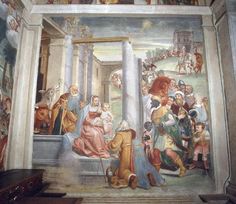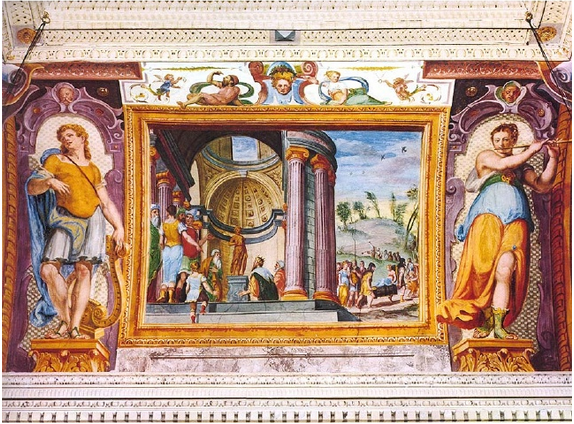By Livia Lupi
Painter Giovan Battista Averara may have died on 10 November 1548, although some sources date his death to 5 November. He was born in Lombardy, perhaps in 1470, and was active as a fresco painter in Bergamo. A great deal of his work has not survived, and the presence of other artists active in the same period named Giovan Battista, and who also came from the town of Averara near Bergamo, like Guarinoni and Baschenis, makes attribution of several works particularly difficult.
An analysis of Giovan Battist’s style, recalling Camillol Boccaccino and Correggio, suggests he was educated in Cremona. His surviving works, all in Bergamo, include New and Old Testament stories in the church of San Michele al Pozzo Bianco (where he collaborated with Lorenzo Lotto); medallions with episodes from the life of the Virgin in Santa Grata inter Vites; stories of Cupid and Psyche and stories of Pompeus Magnus in Palazzo Morando, although some scholars date these to 1575 and attribute them to Giovan Battista Guarinoni d’Averara .
Reference: Angela Ottino Della Chiesa, “Averara, Giovan Battista,” Dizionario Biografico degli Italiani, Enciclopedia Treccani.
Marco Bombardieri, I cicli pittorici profani nella Bergamo del Cinquecento, BA Dissertation, Università degli Studi di Bergamo, 2013
San Michele al Pozzo Bianco, Bergamo.
Flight to Egypt, 1520s?, altar wall of left chapel, San Michele al Pozzo Bianco, Bergamo (the lunette was painted by Lorenzo Lotto).
Nativity, 1520s?, left chapel, San Michele al Pozzo Bianco, Bergamo.
Giovan Battista Guarinoni d’Averara(?), Apollo’s Response to Psyche’s Father, 1575, Palazzo Morando, Bergamo.




